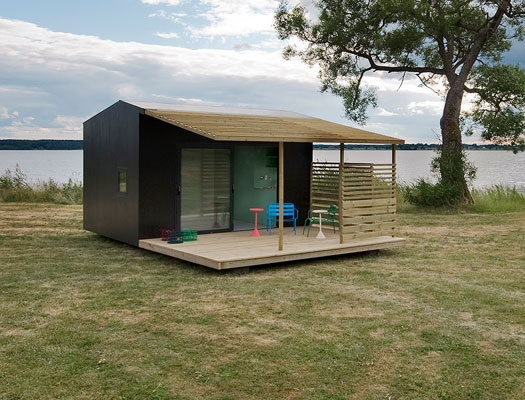Tiny House Movement – Is it Right for You?
Americans live, on average, in the largest houses in the world. An average family has a house that is over 2,500 square feet, and many people aspire to own houses that are even larger. But, there is a small but significant movement toward the other end of the spectrum: more and more people are seeking out houses that are extremely small, some as little as 150 square feet inside, the tiny house movement.
These houses come in all descriptions. Some are converted shipping containers. Others are updated versions of travelers wagons that fit easily into the bed of a pick-up truck. Most have cunning designs that combine daytime living and sleeping areas in a way that maximizes the use of every inch of space. The homes have many advantages:
- Low utility bills. Smaller footprint means that heating and cooling costs are much smaller, too.
- Lower maintenance costs. Having a tiny house also means having a tiny roof. Replacement can be as low as a few hundred as opposed to the ten thousand or more you can spend on a larger home. Other maintenance costs are scaled down as well.
- The best of everything. If you only have 100 square feet of flooring to cover, why not go for your most-desired options? Whether it’s carrera marble counters or flooring made from salvaged antique hardwood, surfaces become much more affordable when you don’t have much space to cover. Many tiny house advocates choose environmentally friendly surfaces that tend to be prohibitively expensive when used in larger dwellings.
- Beautifully designed homes. The houses focus on design over roominess, so, they are usually highly esthetically pleasing spaces.
- A simpler, more streamlined lifestyle. Many of us get bogged down and stressed out by all of our stuff. Extremely small living spaces mean that you need to be ruthless about possessions; those that don’t serve a purpose need to go. Most tiny house dwellers report that they feel much happier and calmer with all of the visual noise removed.
But, there are plenty of drawbacks, as well:
- No place to get away. If you want to go to sleep but your husband wants to watch movies for another two hours, he doesn’t have the option of going to the other end of the house to keep the noise and light from bothering you.
- No storage. While tiny house living is cheaper in many ways, it limits your ability to stock up on sale-priced items, meaning you’ll often pay more for everything from food to toothpaste.
- Permitting can be tough. Many areas won’t allow you to build extremely small houses. Some tiny house advocates have said that they have wound up purchasing lots in trailer parks because other areas won’t allow the scaled-down dwellings.
It is definitely not an option for everyone; but, tiny houses could be a choice for those who want to simplify and scale down from the usual American expectations.

